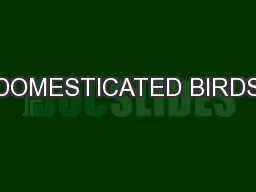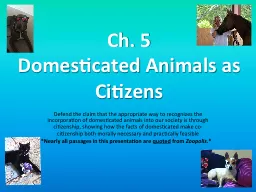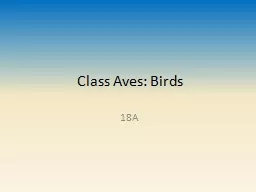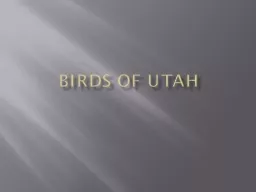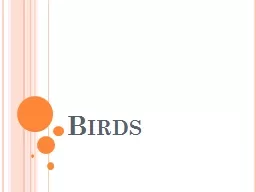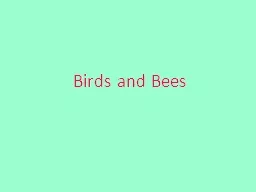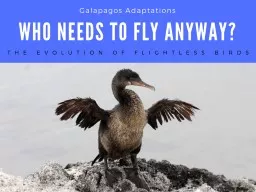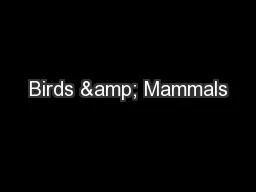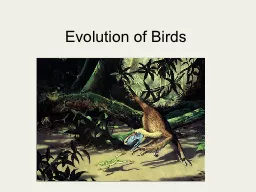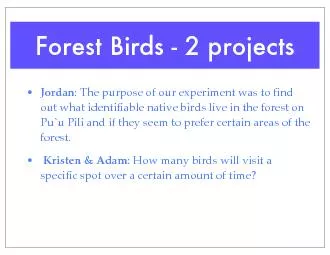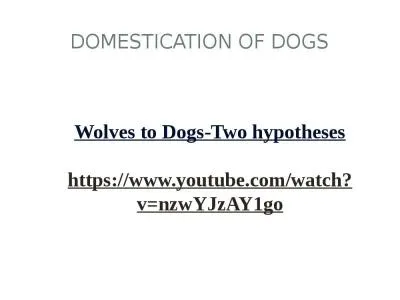PPT-DOMESTICATED BIRDS
Author : sherrill-nordquist | Published Date : 2017-03-31
Small Animal Care OBJECTIVES Standard 900 Select the best pocket pet or bird for a given use Objective 901 Discuss the major breeds of pocket pets and birds PARROT
Presentation Embed Code
Download Presentation
Download Presentation The PPT/PDF document "DOMESTICATED BIRDS" is the property of its rightful owner. Permission is granted to download and print the materials on this website for personal, non-commercial use only, and to display it on your personal computer provided you do not modify the materials and that you retain all copyright notices contained in the materials. By downloading content from our website, you accept the terms of this agreement.
DOMESTICATED BIRDS: Transcript
Download Rules Of Document
"DOMESTICATED BIRDS"The content belongs to its owner. You may download and print it for personal use, without modification, and keep all copyright notices. By downloading, you agree to these terms.
Related Documents

